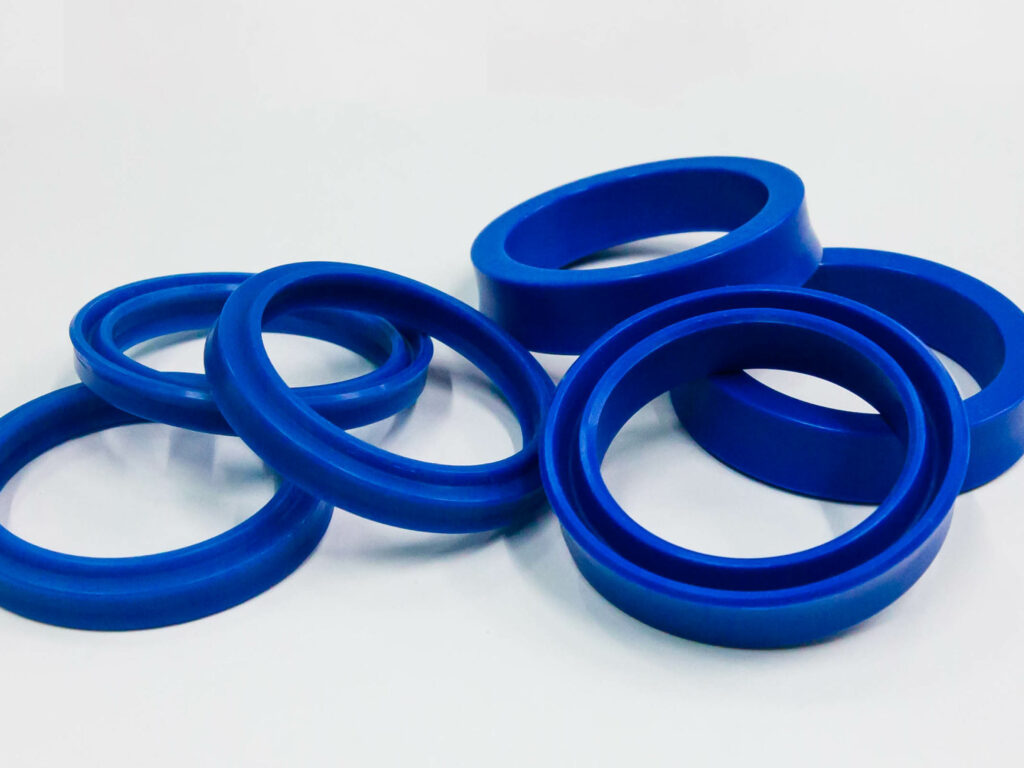In industries like food and beverage or pharmaceutical manufacturing, where the end user ingests the product, preventing contamination is of the utmost importance. This is especially true when it comes to rubber polymers, which can have negative health effects if ingested.
Ultimately, those who operate in this space face a slew of regulatory requirements, health and safety concerns, and immense liability for the products they process, manufacture, package, or, in general, handle.
Thus, when designing machinery for these applications, engineers have to be careful down to the tiniest component, including the o-rings they use for the seals. These o-rings need to meet all the traditional requirements of a seal, such as being reliable, long-lasting, and able to withstand the needs of the application. They also need to be FDA compliant at the least, and also meet other regulatory requirements and be able to withstand harsh cleaning chemicals and practices. Additionally, they need to not pose a contamination risk.
Unfortunately, o-rings can degrade over time, especially when exposed to harsh chemicals used for sterilization and clean in place (CIP) practices, and pose a contamination risk. This degradation leads to frequent o-ring replacement, but, even with this step, there still remains the question: did contamination occur? If a degraded o-ring is discovered too late, this can lead to large amounts of yield loss, extensive investigations, and massive headaches. If the contamination is undiscovered and the product causes injury, illness, or even just unease to the end user, the result could be devastating, including lawsuits and reputation damage.
To avoid these dangerous situations, we recommend considering the use of metal detectable o-rings paired with inline x-rays.
Metal Detectable O-Rings Benefits
During manufacturing, we add a metal filler, such as steel, bronze, or other similar material, to the o-rings. The addition of this metal does not degrade the efficacy of the o-rings, but it does appear in x-rays. At Marco Rubber, our metal detectable o-rings are available in a range of materials that are FDA compliant, including Buna, Viton®, Silicone, and EPDM. Many are available in 3A compliant formulas, as well.
While preventive maintenance is still a primary way to avoid unplanned downtime, using metal detectable o-rings in conjunction with inline x-rays helps mitigate risk and decrease the necessity of this kind of maintenance.
When using an inline x-ray to identify contaminated products, you are able to limit yield loss while improving your risk mitigation strategy.

How to Choose a Metal Detectable O-Ring
While metal detectable o-rings offer unique benefits, choosing a metal detectable o-ring does not differ from choosing any other o-ring. To start, you’ll need to identify the challenges your o-ring will face in your application. These commonly include:
- Chemical exposure
- Ozone exposure
- Operating in high temperatures
- Operating in low temperatures
- High pressure
- Rapid decompression
- Static application
- Dynamic application
- Weather exposure
- Steam or hot amines
From there, you will need to decide on the best material for your application. Our metal detectable o-rings come in Buna, Viton®, Silicone, and EPDM, which have a wide range of benefits.
Metal Detectable O-Ring Materials
Buna (Nitrile or NBR)
Nitrile goes commonly by the name Buna or abbreviation NBR. It is one of the most common rubber sealing materials thanks to its affordability and resistance to lubricants and greases. It holds up well in applications that use:
- most mineral oil-based lubricants,
- greases,
- hydraulic fluids,
- aliphatic hydrocarbons,
- silicone oils,
- and hot water with temperatures up to 175°F (80°C).
While extremely versatile, Nitrile is not the ideal option for aromatic and chlorinated hydrocarbons, fuels with high aromatic content, ozone, and aging.
Viton® (FKM)
Viton® is a highly versatile FKM with high chemical and fuel resistance. It is not recommended for hot water or steam applications but can withstand temperatures up to 390°F (200°C). It holds up well in applications that use:
- Mineral oil,
- aliphatic,
- aromatic,
- and chlorinated hydrocarbons.
It is not compatible with polar solvents, glycol-based brake fluids, or low molecular weight organic acids (formic, acetic, propionic, lactic, n-butyric and isobutyric).
Silicone (VMQ)
Many silicone compounds are inherently FDA compliant as they are made of materials that are typically harmless to ingest. It can withstand a wide temperature range (-65°F / -55°C – 390°F / 200°C), without the need for tear and abrasion resistance.
Unfortunately, silicone is less versatile than its alternatives. It leaves a large amount to be desired when it comes to compatibility with fuels, aromatic mineral oils, steam, silicone oil, acids, or alkalis.
Ethylene-Propylene (EPDM)
EPDM is an excellent option for applications that use hot water (300°F / 100°C) and steam (350°F / 175°C). Additionally it offers good resistance to:
- detergents,
- potassium hydroxide solutions (potash),
- sodium hydroxide (lye),
- silicone oil and greases,
- polar solvents,
- and diluted acids.
While a versatile option for many sealing applications, EPDM is less than desirable for use with mineral oil products.
Sizing Your O-Ring
Next, you will need to identify the right size. Sizing an o-ring can be tricky and is one of the most common pitfalls people run into when choosing an new o-ring. Using the wrong size can result in a faulty seal, but not to worry, we can help.
First, identify what type of operation you have:
- Internal Pressure
- Internal Vacuum
- Dynamic Rod and Piston
- Static Rod and Piston
Next, you will need the correct measurements depending on your identified application.
For Internal pressure:
- Inner Diameter
- Depth
- Width
For Internal Vacuum:
- Outer Diameter
- Depth
- Width
For Dynamic Rod and Piston:
- Outer Diameter Sealing Width
- D Diameter
- E Diameter
- F Diameter
- Inner Diameter Sealing Width
- II Diameter
- I Diameter
- G Diameter
For Static Rod and Piston:
- Outer Diameter Sealing Width
- D Diameter
- H Gap
- E Bore Diameter
- Inner Diameter Sealing Width
- G Tube Diameter
- F Gland Diameter
Once you have those measurements, use our comprehensive sizing guide to identify the correct size for your o-ring.
If this brief section was helpful to you, consider downloading our Complete Guide To Choosing An O-Ring. This free resource is an easy-to-read crash course in choosing an o-ring that will improve the functionality and life of your seal.
Sourcing Your Metal Detectable O-Rings
Our experts are ready to help you identify the right material and size for your application, as well as offer customized solutions. We are certified to ISO 9001:2015 and dedicated to providing quality products with quality customer service.
Contact us to discover your sealing solution.
